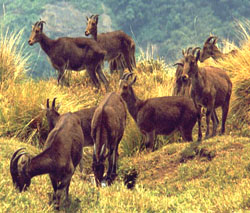GAVI ECO TOURISM
Gavi offers its visitors activities like trekking, wildlife watching, outdoor camping in specially built tents, and night safaris. The road leading to the picturesque Gavi is blanketed by tea plantations, which itself is a refreshing experience. En route to Gavi are places of interest like Mundakayyam, Kuttikanam, Peermedu and Vandiperiyar from where the road deviates to Gavi. Once you reach Gavi the serene eco-lodge ‘Green Mansion’ awaits you like a fairy to embrace you in its protective fold. From the ‘Green Mansion‘, one can savour the spectacular view of the Gavi Lake and the adjoining forests. The famous pilgrim destination, Sabarimala is a short trek from Gavi. For those interested in observing the nocturnal wildlife, night safaris to Kullur, Gavi Pullumedu, Kochu Pampa, Pachakanam provide ample opportunities for wildlife viewing. Another unique feature of Gavi is camping in the forests. One can pitch a tent in the camping site, which is a rarity in many Indian forests. As the dusk stretches into the silence of the night, one can feel the presence of wildlife in the middle of nowhere, an experience that cannot be explained in words. There are also tree top houses where one can enjoy the avian life to the fullest. Gavi is bound to cast its magical spell on every visitor and is surely a place that should not be missed in one’s lifetime. Gavi is pristine, and it belongs to the wild, which is a reminder that visitors are responsible for their intentions and actions, which will have a bearing on the upkeep of Gavi for a long time to come.
Getting There
Gavi is 28 kms south west of Vandiperiyar, a town in N.H 220 the highway connecting Kollam and Madurai, which itself is 14 kms from Kumily,near Thekkady. Let the rough journey to Gavi may better be made on a sturdy vehicle like jeep which are available on hire either from Vandiperiyar or from Kumily. Entry passes must be obtained from the Forest Check Post enroute at Vallakkadavu. Advance booking with the Kerala Forest Development Corporation Ltd. is highly appreciable wherein such formalities will be taken care of by the Company itself. How to Reach By Air: the Kochi International Airport (200kms) ,Trivandrum International Airport (250kms)and Madurai (195kms) are the nearest Airports. By Rail: The nearest railway station is Kottayam (120kms) and is well connected with Thiruvananthapuram and Kochi. By Road: Regular buses are available to Vandiperiyar from Kochi & Thiruvananthapuram .





























